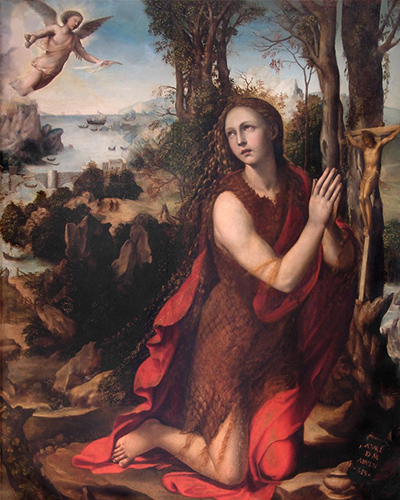A painter of the Sienese school whose career reflects the transition from the Renaissance to Mannerism. Born in Vercelli, in the duchy of Savoy (now Piedmont), in 1477, at the age of thirteen he entered the workshop of the Piedmont painter Giovanni Martino Spanzotti as an apprentice. At the beginning of the 16th century he must have lived in Milan, in contact with the Lombard painters of Leonardo, from where he moved to the city that would become his adopted homeland, Siena, to paint the frescoes in the refectory of the Olivetan convent of Sant'Anna in Camprena, an order for which he executed other works. Thanks to the celebrated Sienese banker Agostino Chigi, he travelled to Rome in 1508 where he was commissioned by Pope Julius II to paint the ceiling frescoes in the Seal Room of the Vatican palace, which Raphael at least partly completed a year later. In Rome he reached his artistic maturity by combining Lombard's Lombard experience, his knowledge of Raphael's work and Florentine novelties, painting the most important work of these Roman years: the cycle of frescoes in Agostino Chigi's nuptial chamber in the Villa Famesina in Rome and, in particular, the scene of the Nuptials of Alexander and Roxana.
A highly prolific artist, in addition to his murals he also painted numerous panels, among which critics have singled out the Holy Family with Saint Leonard, painted in 1535 for the altar of San Agostino in Siena. He suffered the scorn of Giorgio Vasari who, according to some specialists, misinterpreted his nickname in a moralistic sense, but was nevertheless highly esteemed during his lifetime. His critical fortunes have fluctuated between those who emphasise his notable place in the painting of the first half of the 16th century and his influence on the later development of the Sienese school, and those based on the presumed eclecticism of his style, which imitated those of Leonardo and Raphael.

